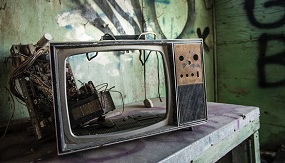
WEEE © Unsplash
The circular economy is currently a hot topic in Finland. One of the objectives of the recently published Government Programme is to strengthen Finland’s role as a circular economy pioneer. From the perspective of the risks associated with chemicals and hazardous substances, circular economy solutions present both opportunities and risks.
The goal of a sustainable circular economy is to keep materials and goods in circulation as long as possible while simultaneously removing hazardous substances from circulation. This is no easy task. However, a number of different methods have been proposed for tackling the issues. “Solving these problems requires research, legislation and new operating models,” summarises Jani Salminen, head of the Finnish Environment Institute’s Contaminants unit.
The reputation that a given material or product has is immensely important to different interest groups. Customers must be able to trust that companies producing materials have a handle on the risk management of hazardous substances. “Even before a material poses a hazard, we must possess the tools for assessing risks through common rules of conduct. Quality can be assured through limit values and quality assurance, for example,” Salminen says.
The differing circulation speeds of different materials create their own set of challenges; food packaging circulates much faster than construction materials, for example. Materials can also become hazardous during use, as a result of being painted, for example.
Waste can also be exempt from being classified as waste based on End of Waste criteria, for example. Finland is currently in the process of preparing national EoW criteria for concrete waste. The possibility of creating a similar process for plastic is also currently being discussed.
The recycling rate of WEEE can be raised
Waste electrical and electronic equipment, or WEEE, is one of the key waste types of the National Waste Plan. “For example, a single mobile phone may contain as many as 40–50 different minerals, out of many of which less than one per cent is recycled,” says WEEE Product Manager Tatu Karlström from Kuusakoski Oy.
Kuusakoski Oy currently has approximately 100 employees working on recycling electronics. The dismantling is done by hand, and it is here that the recycling rate of materials could be substantially increased. The falling metal concentrations of devices set their own challenges when it comes to recycling. “Before, electronics were assembled using screws, which made dismantling easier, but nowadays parts are glued together, which makes them nearly impossible to take apart,” Karlström says.
In addition to carrying out traditional recycling, Kuusakoski Oy also processes electrical devices for re-use. The company makes approximately 40,000 used IT devices available for reuse every year. “Each device undergoes an overwriting process, their origin markings are removed, refurbishing is carried out if necessary and then the devices are sold to bulk buyers,” Karlström says. A business laptop that has served for a few years can be refurbished and turned into a good working laptop for a student, for example. The components used in devices intended for professional use last longer before becoming outdated than those found in consumer models.
Hazardous substances are a topical issue in the context of WEEE as well. “We carry out active research on the topic in collaboration with research organisations,” Karlström says.
Microplastics are a hot topic everywhere
Plastics and microplastics have been frequently highlighted by the media. The Finnish Environment Institute is currently studying the volumes and sources of microplastics accumulating in water bodies. Microplastics end up in water bodies via municipal wastewater and stormwater, among other ways. “The greatest source of microplastics is transportation, in the context of which particles are released especially from road marking compounds and car tyres. For example, a passenger car tyre weighing eight kilograms can shed approximately 10–20% of its total weight over the course of its service life,” says Leading Researcher Outi Setälä from the Finnish Environment Institute.
Another major source of microplastics is the manufacturing of plastic raw materials. There is also a great deal of discussion in the media about added microplastics in cosmetics, for example, but their share of total microplastics emissions is small. The estimated volumes are based on statistical data on product and material consumption as well as measurements and estimates of the release mechanisms of microplastics and particle amounts.
According to a report prepared in the EU, the capacity of wastewater treatment plants to screen microplastic particles varies. The screening capacity of Finnish wastewater treatment plants is good. For example, studies conducted at the Viikinmäki wastewater treatment plant in Helsinki found that 99% of the microplastic particles contained in wastewater are removed during processing. However, these microplastic particles remain in the wastewater sludge, hindering its utilisation.
More information
- Jani Salminen, head of the Finnish Environment Institute’s Contaminants unit, firstname.lastname@ymparisto.fi
- Leading Researcher Outi Setälä from the Finnish Environment Institute, firstname.lastname@ymparisto.fi